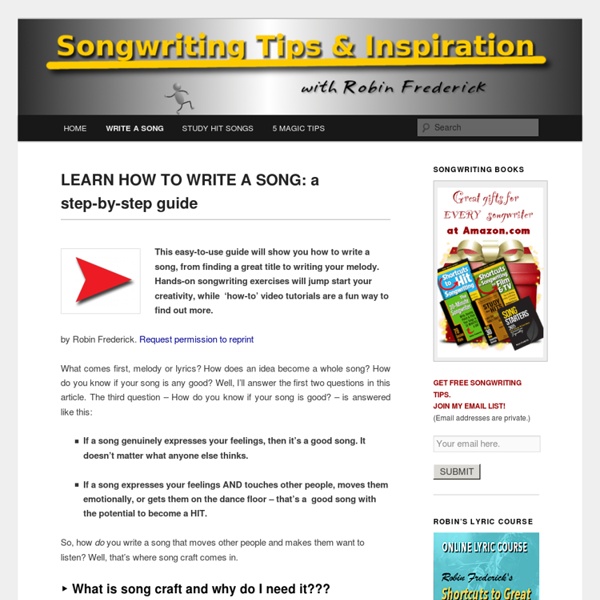Arrangement Tips and Tricks: Fills and Transitions
Twice a month we revisit some of our reader favorite posts from throughout the history of Audiotuts+. This tutorial was first published in March 2010. Even the best track can be let down by bad arrangement. Let things slide in this area and you're in danger of losing your listeners' interest. One area that is hugely important is creating interesting transitions and using varying fills when introducing new elements. Step 1: The Basic Drop For the purpose of this tutorial I have mocked up a small dummy arrangement showing the transition between a few different sections of a hypothetical track. In each step of the tutorial we'll look at different techniques for creating varied and interesting fills. First up let's take a look at perhaps the most simple method for moving between sections in your track, the drop. Basically all we are aiming to do here is remove one or more elements from the mix to drop the energy of the piece temporarily. The basic drop. The drop fill in action. ... ...
How-To Writing: Motivating Students to Write for a Real Purpose
ReadWriteThink couldn't publish all of this great content without literacy experts to write and review for us. If you've got lessons plans, videos, activities, or other ideas you'd like to contribute, we'd love to hear from you. More Find the latest in professional publications, learn new techniques and strategies, and find out how you can connect with other literacy professionals. More Teacher Resources by Grade Your students can save their work with Student Interactives. More Home › Classroom Resources › Lesson Plans Lesson Plan Overview Featured Resources From Theory to Practice What do students need to know to succeed in fourth grade (or third or fifth)? back to top Power Proofreading: Students can use this interactive site to complete activities to build their proofreading skills. Huntley-Johnston, L., Merritt, S.P., & Huffman, L.E. (1997). Students need to understand that there are purposes for writing other than for the teacher to read and grade it.
The Essential Secrets of Songwriting Blog
I analyzed the chords to 1300 songs for patterns. This is what I found. (Part 3) Interactive Discovery | Blog – Hooktheory
Last year, we discussed the first results of a long term effort to study the patterns found in the chords of popular songs. The reception that we got was incredibly positive, and we received a ton of great feedback. The two most common questions we’ve gotten from people have been: “I really like the sound of chords X Y Z together. Our answer: Hooktheory Trends Our crowdsourced database is uniquely suited to answer these questions because it contains the harmonic data of songs indexed in a way that makes it easy to perform this type of analysis. Hooktheory is experiencing VERY high traffic as a result of this article. Mirror 1 Mirror 2 How Trends Works When you open Trends, you will see the most commonly used chords in the key of C. Click a song to highlight where it uses the chords. The ability to quickly explore visually how chords are used in different songs opens up a huge potential for discovery and learning. Get started using Trends by clicking here! Fun things to try
Writing Songs : Harmonic Movement : How Music Works
In the previous topic, we created a harmonic backing for a melody using the related chords of the melody's scale. You may have wondered how we decided to arrange them in a progression, since there are so many combinations we could have chosen. In general, you will be relying heavily on your ear to decide which chords work well with the melody, and what order they should be arranged in. This is (of course!) as it shoud be. As you listen to harmonic movement, it may help to imagine a 'shape' to the music, feeling the tension varying with each chord change, up to the satisfing release (or resolving) of tension with the last chord. There are many common harmonic movements from one related chord to another that occur often in music. We will express all of these movements in roman numeral notation to help you transpose them to any key, but an example for each will also be given in the key of C. Here's another example progression with the I and V chords.
Electronic Music Theory: How to Quickly Write Better Chord Progressions w/ Pat Cupo « Dubspot Blog
A lot of students have asked me for tips and tricks to writing better chord progressions. By that time they had already learned about building Major and Minor chords, but when it came to a chord progression – a series of chords occurring in time – they were a bit stuck. If you’re ever in the same position, then feel free to use these simple guidelines to help you quickly write chord progressions. Follow them carefully and strictly at first and over time it’ll start to come naturally to you. 1) Use only Major or Minor chords. Just keep things simple. C Major [audio: Major Chord C Minor [audio: Minor Chord 2) Begin and end with the same chord The thing about music is that it’s like a game. [audio: Minor Chord So what chord am I going to end with? 3) Move freely among diatonic chords The word Diatonic means “from the tonic”. What’s Included:



